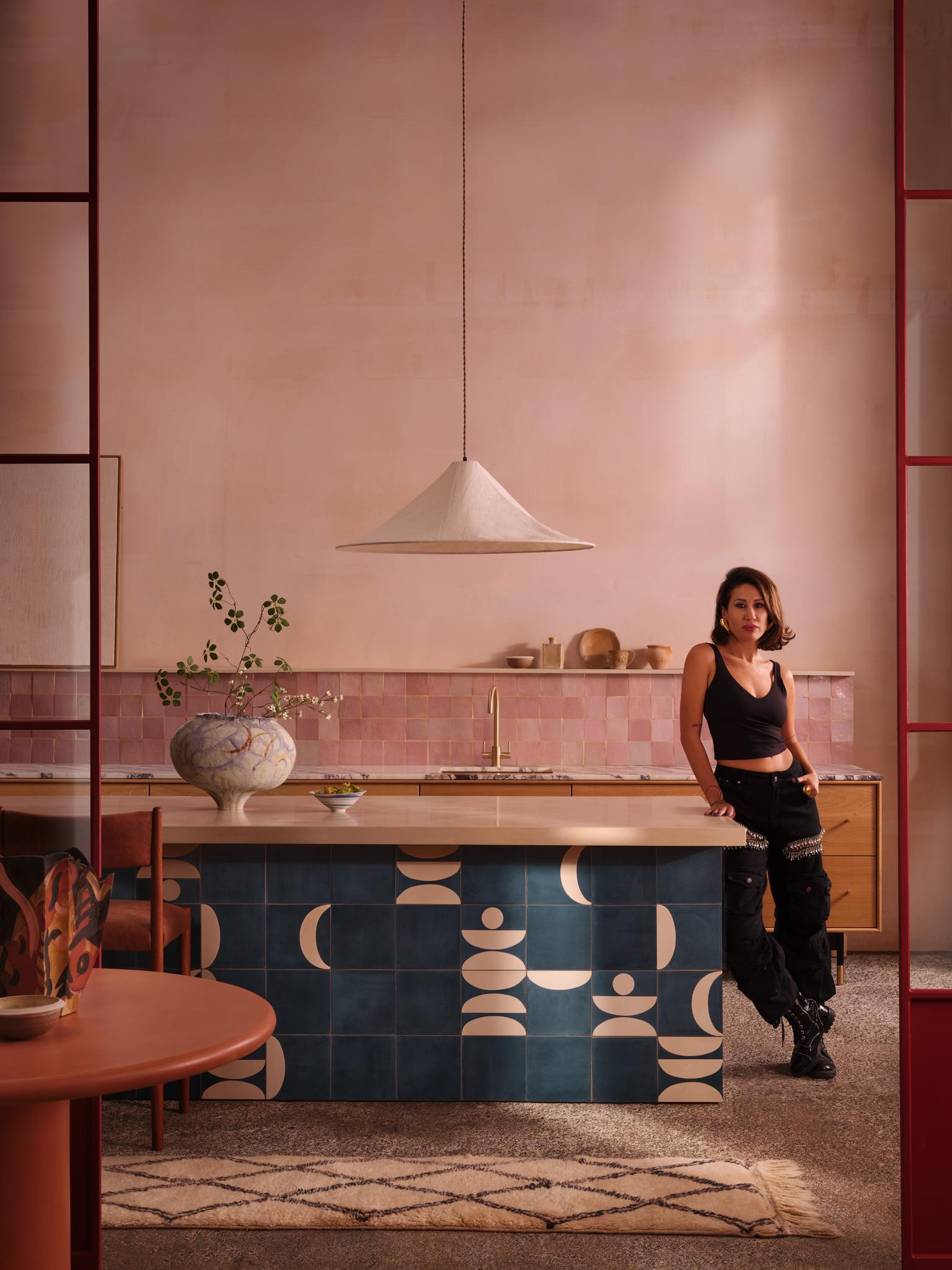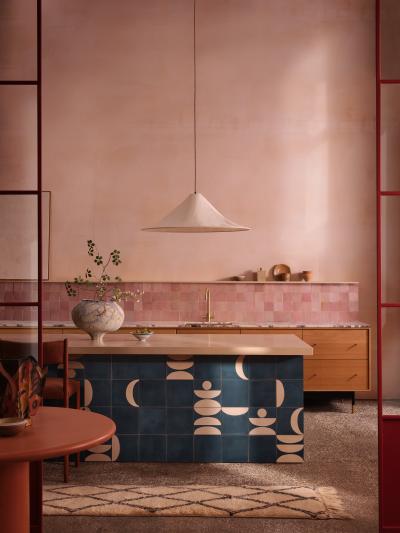
The Timeless Beauty of Fate
von Eva Winterer
The Timeless Beauty of Fate
Ein Bekenntnis zur Ewigkeit: Damla Turgut über die Ästhetik des Unvollkommenen, Langlebigkeit als oberstes Design-Prinzip und die unendlichen Gestaltungsmöglichkeiten für das Zuhause. Die Gründerin von Otto Tiles im Gespräch über ihr ganz persönliches Kismet.
von Eva Winterer
"It describes exactly my journey until today, what has happened to me," says Damla Turgut in an interview with Silent Luxury about the name of her latest collection. "I didn’t plan to become a designer. But I guess it was meant to be." Kismet—fate or destiny—is more than a name for the founder of Otto Tiles & Design. It is the philosophical anchor of her work, the beauty of the unplanned that often ultimately survives centuries.
KISMET and the Matriarchal Heritage
The idea for this design is rooted in Çatalhöyük, one of the oldest known settlements in human history. Turgut found in this Neolithic civilization the blueprint for a design that celebrates the powerful role of women as the original force. The connection to the power distribution in historical Çatalhöyük lends the design an extraordinary emotional tension: "It is believed that in this civilization women were equal to men." The settlement, now protected as a UNESCO World Heritage site, was a consistently egalitarian community from today's perspective. "This idea of a female-led society profoundly touched me. I wanted to translate this strength into a visual language,” Turgut explains her inspiration.

Fate and Symbolism
With Kismet, Otto Tiles connects history with the present. Each hand-crafted tile embodies this philosophy: imperfection as perfection, individuality as luxury. "Every piece of our collections has a special story,” Turgut emphasizes. “Without a story, I cannot create anything. Because I lack the inspiration and the possibility to think about how to translate narratives or thoughts into a design.”
With the Kismet collection, Turgut ties into the cultural roots of Anatolia. Wolves and fertility symbols, once etched into cave walls, now reappear in modern bathrooms and kitchens. Turgut harmonizes them with gentle tones like beige and natural white: “These symbols are strong, they need balance. That’s why I’ve included areas of calm, so that the strength becomes a harmonious whole. For me, that is the perfect imperfection.”
A strong symbolism stands behind this, Turgut explains: it is an homage to women. “The pattern that resembles the woman and builds up around her also reflects the richness that women symbolize, and nature,” she describes. “I took the inspirations from the cave paintings that I saw during the visit to Çatalhöyük, and from the stories that these cave paintings told."
The Aesthetic of Imperfection
The more one loses oneself in the patterns, the more aware one becomes of the special quality of Otto Tiles: the calculated deviation from industrial, machine-made perfectionism, as each tile is crafted by hand. The unmistakable sign: No tile is exactly like another, and each develops a patina over time that enhances its beauty. Turgut is convinced: “The first year is just the beginning. After ten years, these tiles have a soul that no industrial product can ever have. It’s similar to a good wine: the beauty of the tiles matures with time."
The production follows an old tradition: clay is mixed by hand, colors are individually matched, and together they are poured into brass molds. The hydraulic press—the only machine in this process—compacts the material. The result: tiles with a life expectancy of decades. This is very conscious and a core element of the philosophy of Otto Tiles and its founder: “Especially in a time when everything is becoming faster, smoother, and more interchangeable, our tiles are created piece by piece by hand. They bear the signature of people, not the stamp of machines.”
The Anti-Trend Approach
In an age of a throwaway mentality, Otto Tiles offers a timeless beauty that endures generations. “I don’t follow trends. Trends are invented to sell. My tiles are supposed to last centuries. That means: for a tile that we say you can use for centuries, there can be no trend,” Turgut describes. “It’s about what attracts you. It’s about how you feel. What makes you happy?” Turgut summarizes her design philosophy. “My only goal is to make people happy with our designs and tiles.”
Hundreds of Possibilities, One Collection
The symbols of the collections have even more power: they stand for freedom of choice and design. “With the same tiles, you can create countless designs—combine colors differently, rotate patterns, vary layouts. This way, every customer can add their own touch to the design according to their personal taste.” Turgut emphasizes the democratic approach of her design concept: Design becomes co-creation between artisans, the brand, designers, and customers. From a single collection, hundreds of different designs emerge through color variations and laying patterns, comparable to bespoke couture for floors and spaces.
This system is ingenious in its simplicity: customers choose from existing patterns, then change colors according to personal taste. Beige becomes cobalt blue, terracotta becomes mint. Every variation tells a new story. Turgut knows the customers’ reactions: “Many are astonished by the number of options they have to design their home with one collection. The possibilities are endless.” “That’s why I said that the encaustic tile is a great playground for an interior designer, for an architect, for a homeowner,” Turgut describes the flexibility of her system. The consequence: “If you have a hundred square meters, you will get a design that is completely different from that of another customer with a hundred square meters.”
Global Language
Otto Tiles itself dissolves geographical and cultural boundaries. The tiles speak a universal language of beauty that touches people in London just as much as in Istanbul or Miami. “I believe they are literally like me,” Turgut describes her design concept. “They have spices of everything in them. I am Turkish, influenced by the West. And just like me, my designs carry Eastern and Western elements within them.” Her customers confirm this cultural bridge function: “Western observers discover the Eastern-Mediterranean ornamentation, Eastern observers the Western clarity.”
This cultural synthesis makes Otto Tiles a truly global design phenomenon: tiles that unite East and West, tradition and modernity, craftsmanship and contemporary aesthetics. In an age of a throwaway mentality, Otto Tiles offers a timeless beauty that endures generations. “I don’t follow trends. Trends are invented to sell. My tiles are supposed to last centuries. That means: for a tile that we say you can use for centuries, there can be no trend,” Turgut describes. “It’s about what attracts you. It’s about how you feel. What makes you happy?” Turgut summarizes her design philosophy. “My only goal is to make people happy with our designs and tiles.”
The Founder’s Voice
The success of Otto Tiles is inseparable from the determined personality of Damla Turgut. Her journey from jurisprudence to the domain of design and production is a constant point of reflection for her: “I really have to keep reminding myself who I am. Because sometimes we forget how far we have come,” the founder reflects with disarming honesty. This brings the historical KISMET narrative full circle. She is the modern embodiment of the female power she celebrates in her designs.








